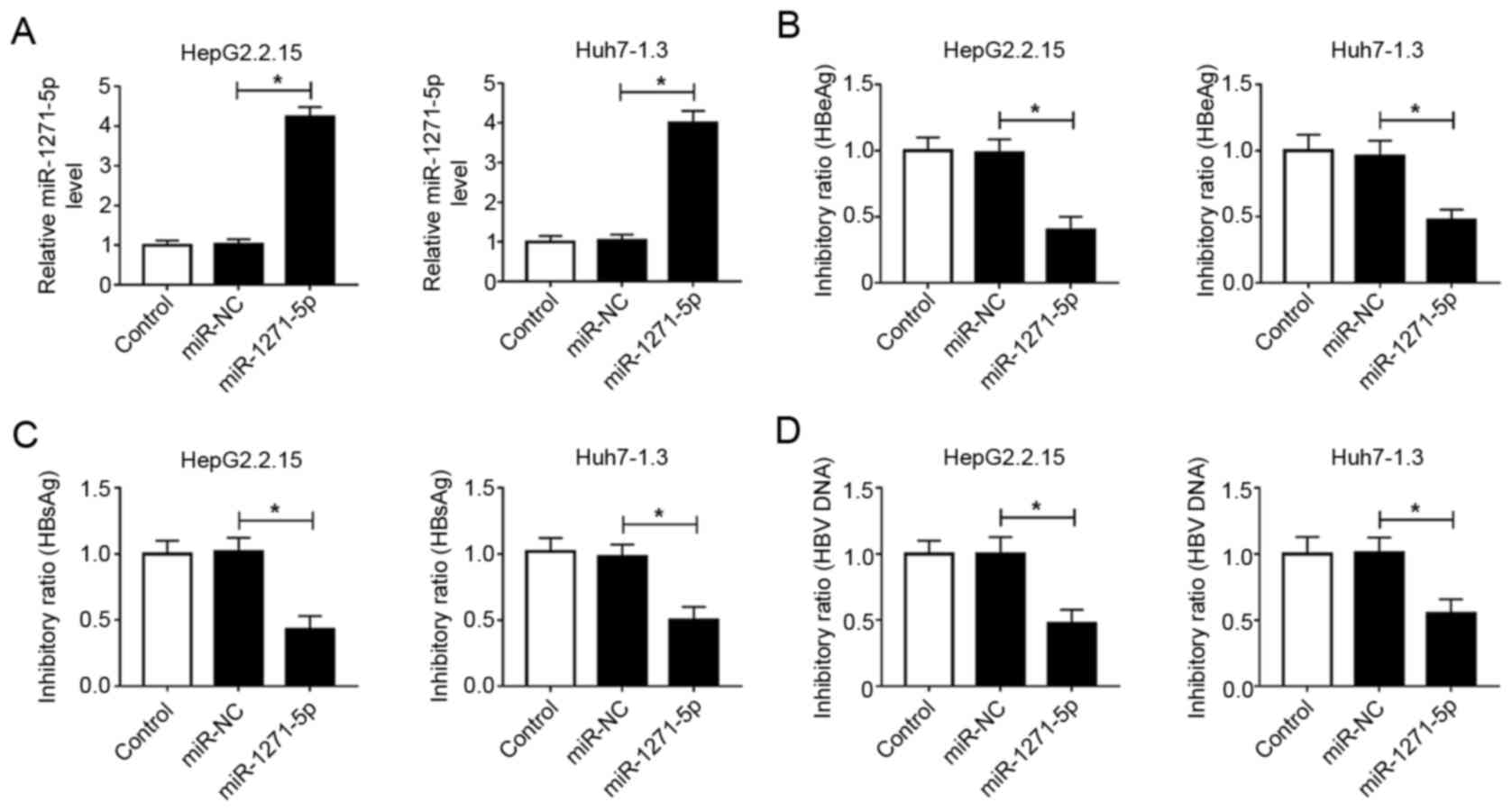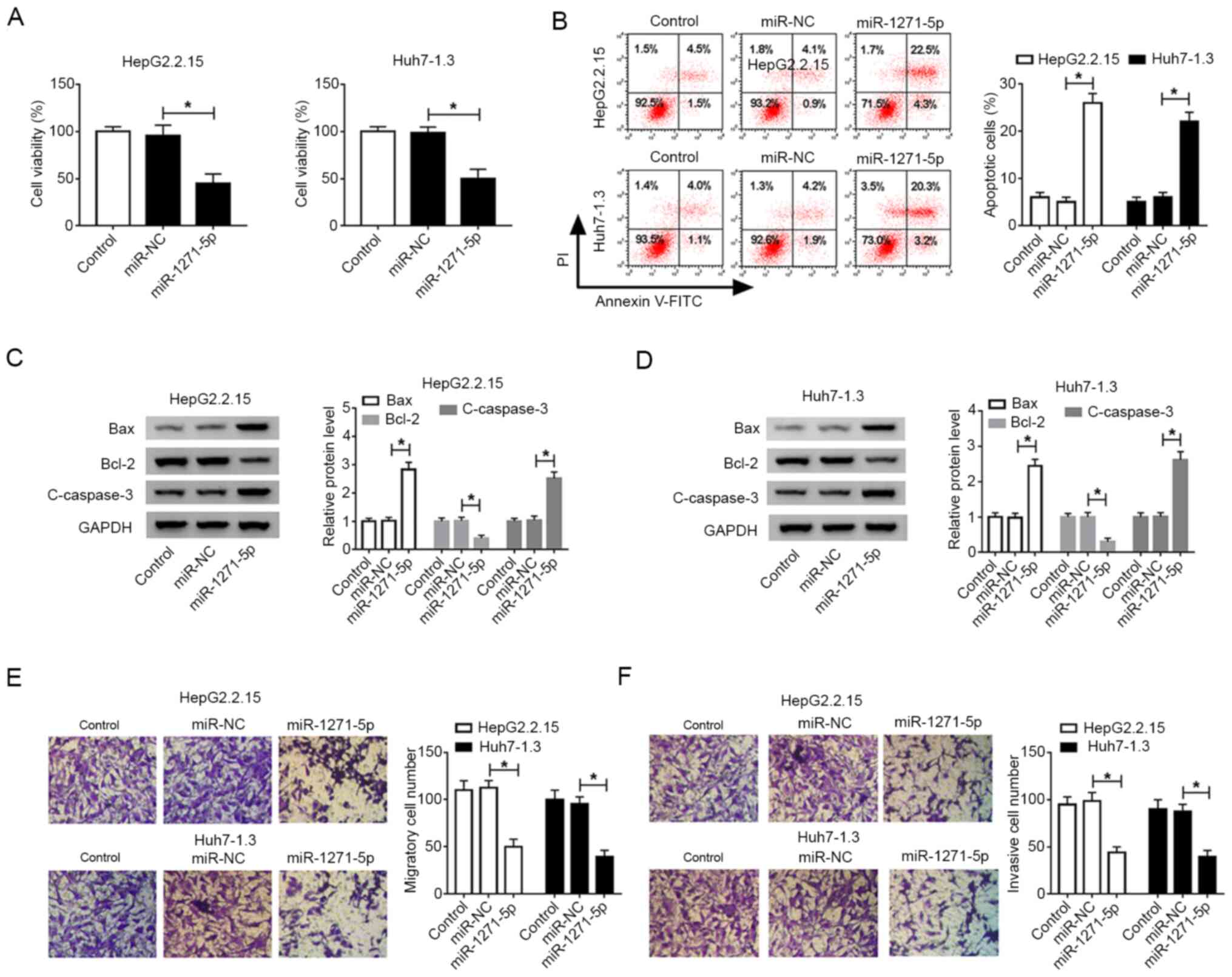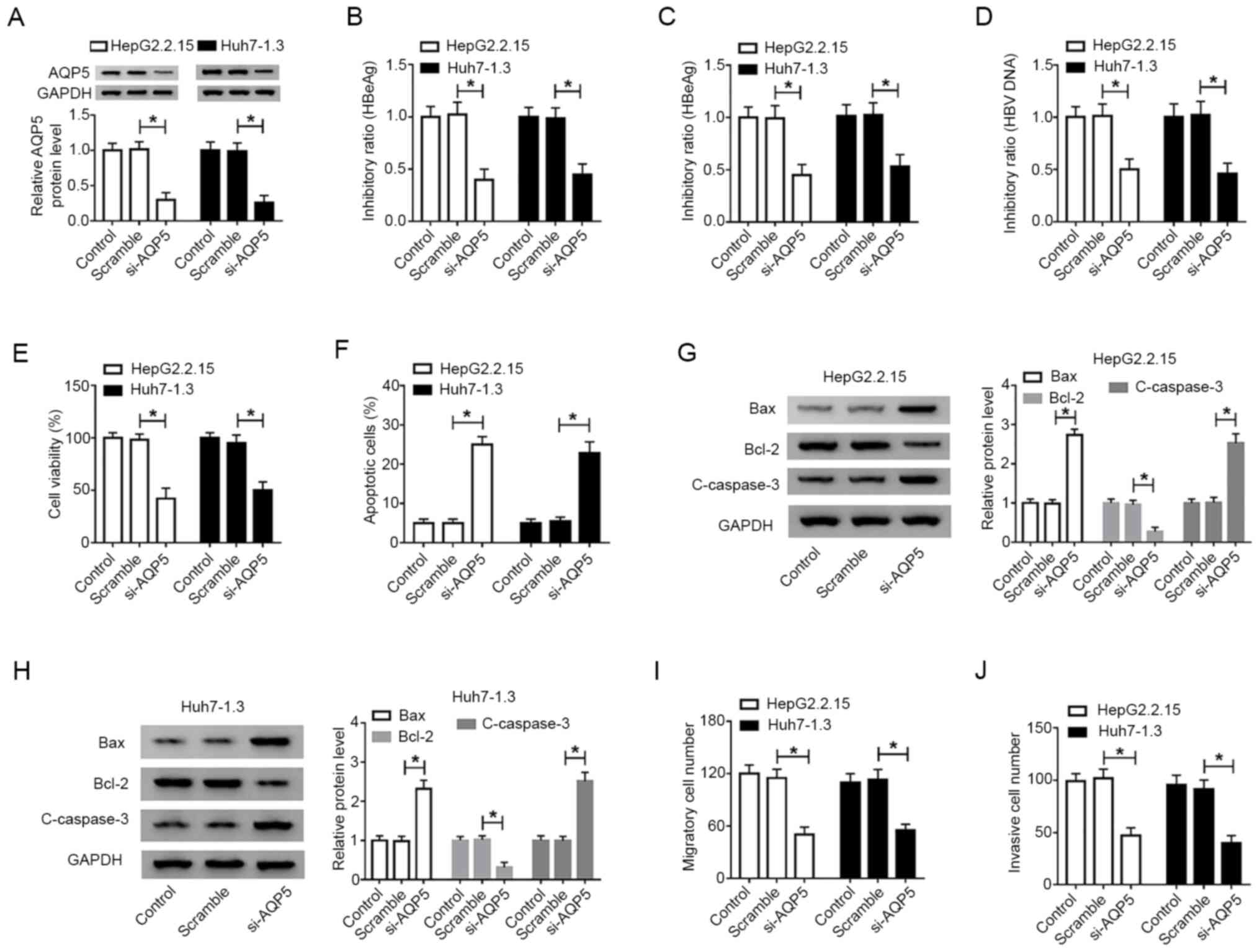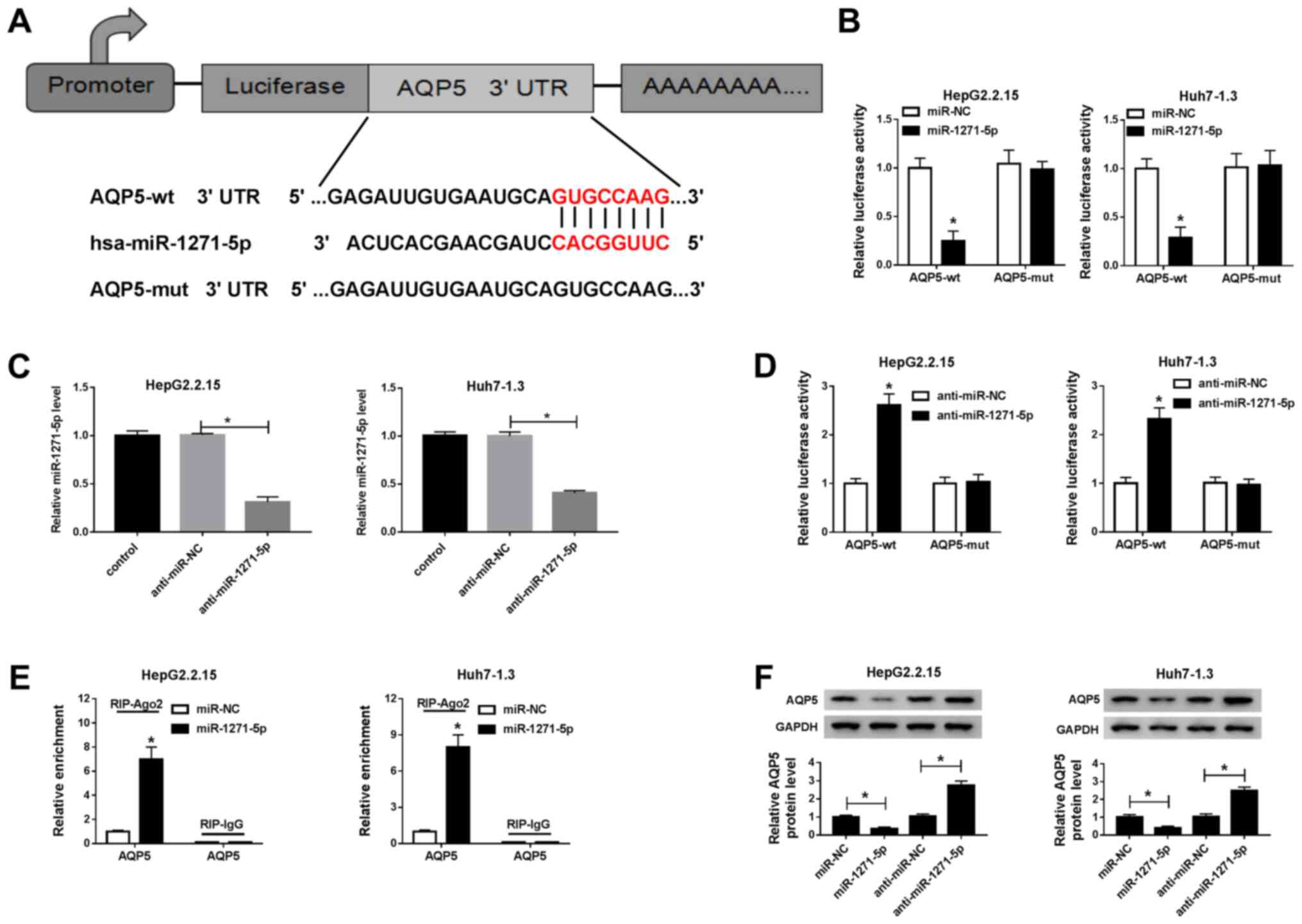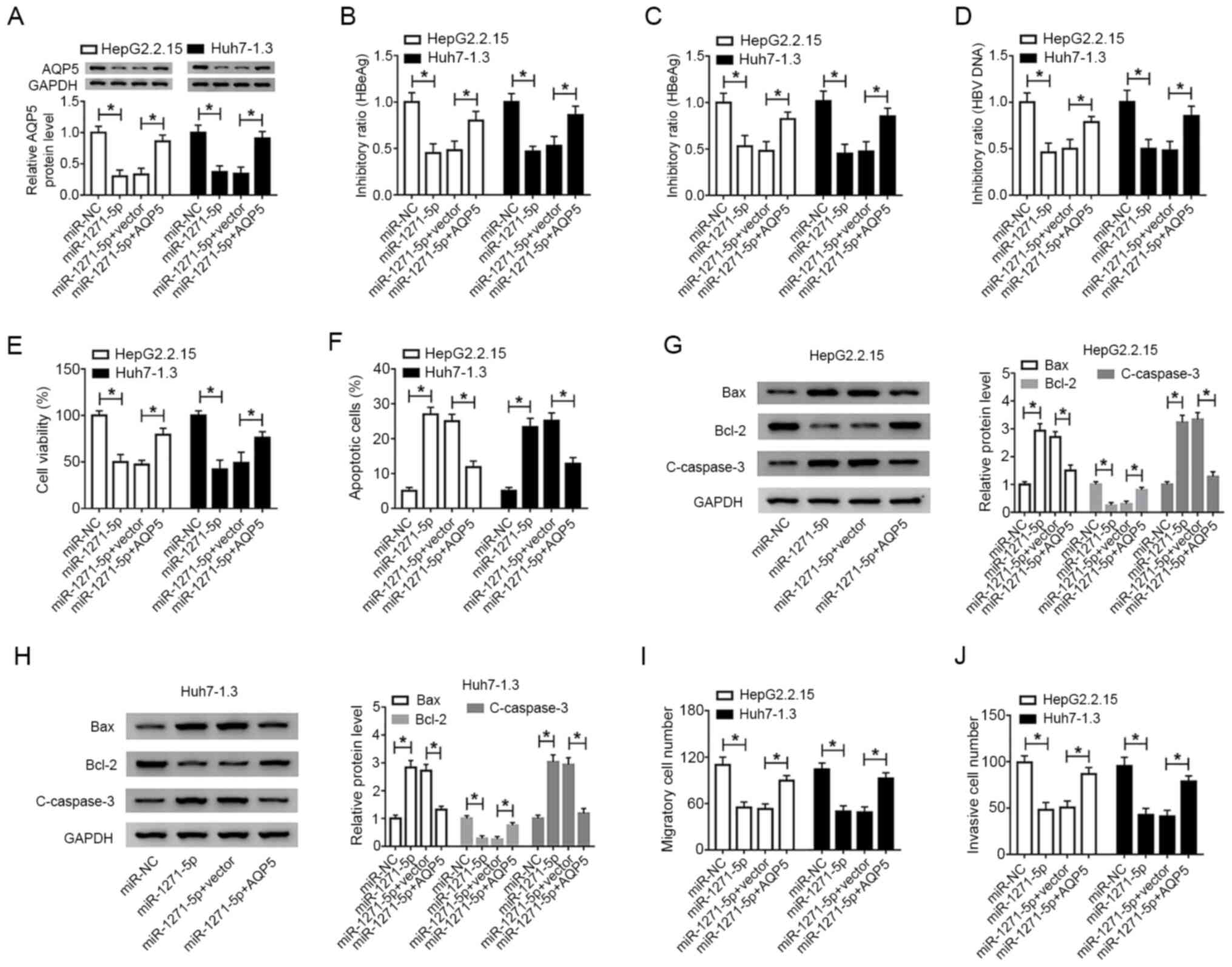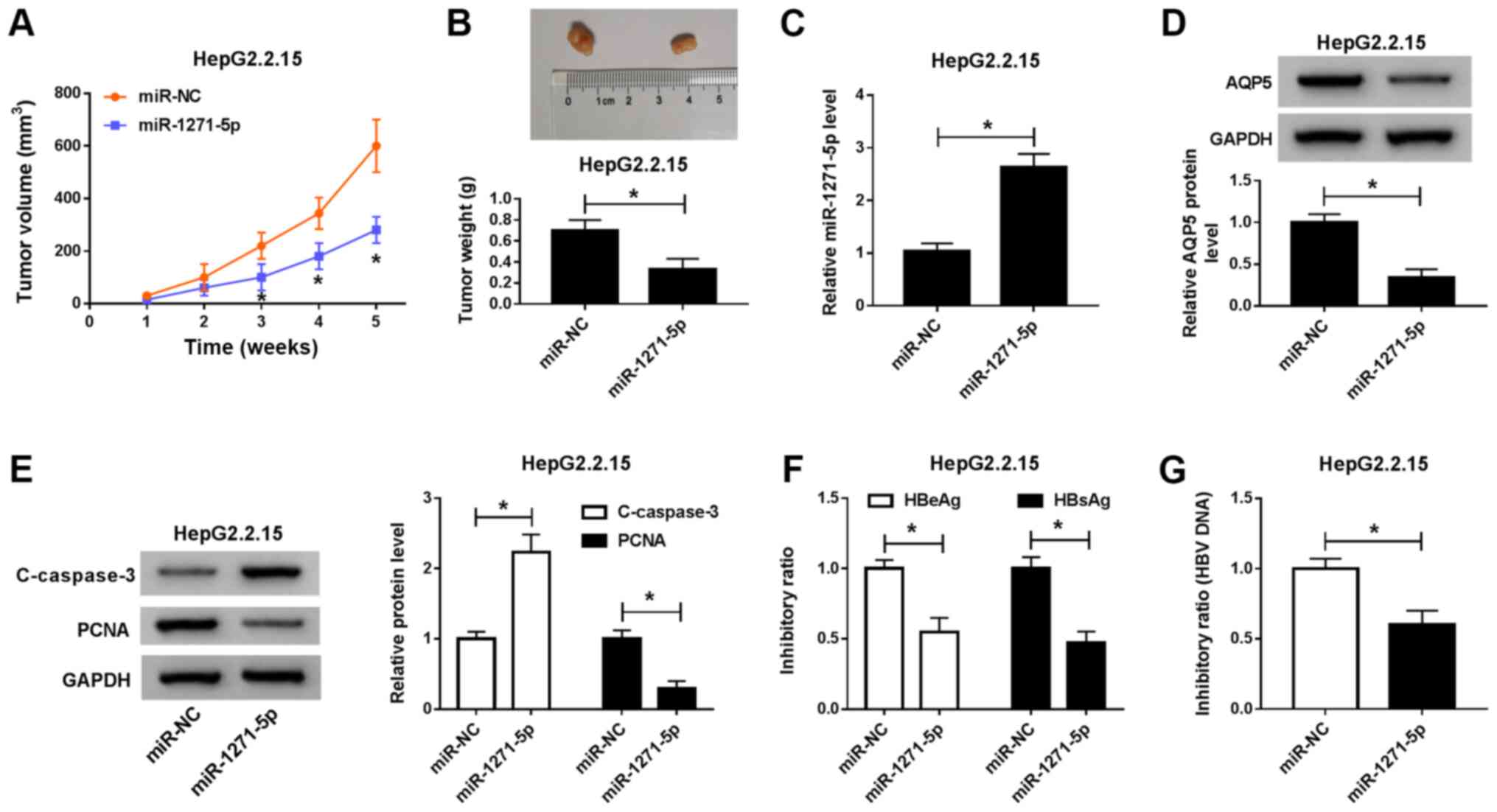|
1
|
De Giorgio M and Fagiuoli S: Management of
hepatocellular carcinoma. Dig Dis. 25:279–281. 2007. View Article : Google Scholar : PubMed/NCBI
|
|
2
|
Ferlay J, Shin HR, Bray F, Forman D,
Mathers C and Parkin DM: Estimates of worldwide burden of cancer in
2008: GLOBOCAN 2008. Int J Cancer. 127:2893–2917. 2010. View Article : Google Scholar : PubMed/NCBI
|
|
3
|
El-Serag HB and Rudolph KL: Hepatocellular
carcinoma: Epidemiology and molecular carcinogenesis.
Gastroenterology. 132:2557–2576. 2007. View Article : Google Scholar : PubMed/NCBI
|
|
4
|
Amir F, Siddiqui ZI, Farooqui SR, Anwer A,
Khan S, Azmi MI, Mehmankhah M, Dohare R, Khan LA and Kazim SN:
Impact of length of replication competent genome of hepatitis B
virus over the differential antigenic secretion. J Cell Biochem.
120:17858–17871. 2019. View Article : Google Scholar : PubMed/NCBI
|
|
5
|
Downs LO, Smith DA, Lumley SF, Patel M,
Mcnaughton AL, Mokaya J, Ansari MA, Salih H, Varnai KA, Freeman O,
et al: Electronic health informatics data to describe clearance
dynamics of hepatitis B surface antigen (HBsAg) and e antigen
(HBeAg) in chronic hepatitis B virus infection. MBio. 10:e00699–19.
2019. View Article : Google Scholar : PubMed/NCBI
|
|
6
|
Gu S, Jin L, Zhang F, Sarnow P and Kay MA:
Biological basis for restriction of microRNA targets to the 3
untranslated region in mammalian mRNAs. Nat Struct Mol Biol.
16:144–150. 2009. View Article : Google Scholar : PubMed/NCBI
|
|
7
|
Bai PS, Xia N, Sun H and Kong Y:
Pleiotrophin, a target of miR-384, promotes proliferation,
metastasis and lipogenesis in HBV-related hepatocellular carcinoma.
J Cell Mol Med. 21:3023–3043. 2017. View Article : Google Scholar : PubMed/NCBI
|
|
8
|
Huang JY, Chen HL and Shih C: MicroRNA
miR-204 and miR-1236 inhibit hepatitis B virus replication via two
different mechanisms. Sci Rep. 6:347402016. View Article : Google Scholar : PubMed/NCBI
|
|
9
|
Yen CS, Su ZR, Lee YP, Liu IT and Yen CJ:
miR-106b promotes cancer progression in hepatitis B
virus-associated hepatocellular carcinoma. World J Gastroenterol.
22:5183–5192. 2016. View Article : Google Scholar : PubMed/NCBI
|
|
10
|
Lin MF, Yang YF, Peng ZP, Zhang MF, Liang
JY, Chen W, Liu XH and Zheng YL: FOXK2, regulted by miR-1271-5p,
promotes cell growth and indicates unfavorable prognosis in
hepatocellular carcinoma. Int J Biochem Cell Biol. 88:155–161.
2017. View Article : Google Scholar : PubMed/NCBI
|
|
11
|
Direito I, Madeira A, Brito MA and Soveral
G: Aquaporin-5: From structure to function and dysfunction in
cancer. Cell Mol Life Sci. 73:1623–1640. 2016. View Article : Google Scholar : PubMed/NCBI
|
|
12
|
Sekine S, Shimada Y, Nagata T, Moriyama M,
Omura T, Watanabe T, Hori R, Yoshioka I, Okumura T, Sawada S, et
al: Prognostic significance of aquaporins in human biliary tract
carcinoma. Oncol Rep. 27:1741–1747. 2012.PubMed/NCBI
|
|
13
|
Song T, Yang H, Ho JC, Tang SC, Sze SC,
Lao L, Wang Y and Zhang KY: Expression of aquaporin 5 in primary
carcinoma and lymph node metastatic carcinoma of non-small cell
lung cancer. Oncol Lett. 9:2799–2804. 2015. View Article : Google Scholar : PubMed/NCBI
|
|
14
|
Zhang L, Lu J, Zhou H, Du Z and Zhang G:
Silencing of aquaporin 5 inhibits the growth of A549 lung cancer
cells in vitro and in vivo. Int J Oncol. 52:1643–1650.
2018.PubMed/NCBI
|
|
15
|
Jung HJ, Park JY, Jeon HS and Kwon TH:
Aquaporin-5: A marker protein for proliferation and migration of
human breast cancer cells. PLoS One. 6:e284922011. View Article : Google Scholar : PubMed/NCBI
|
|
16
|
Livak KJ and Schmittgen TD: Analysis of
relative gene expression data using real-time quantitative PCR and
the 2(-Delta Delta C(T)) method. Methods. 25:402–408. 2001.
View Article : Google Scholar : PubMed/NCBI
|
|
17
|
Arzumanyan A, Reis HM and Feitelson MA:
Pathogenic mechanisms in HBV- and HCV-associated hepatocellular
carcinoma. Nat Rev Cancer. 13:123–135. 2013. View Article : Google Scholar : PubMed/NCBI
|
|
18
|
Tian Y, Chen YY and Han AL: MiR-1271
inhibits cell proliferation and metastasis by targeting LDHA in
endometrial cancer. Eur Rev Med Pharmacol Sci. 23:5648–5656.
2019.PubMed/NCBI
|
|
19
|
Yang L, Wang Y, Li YJ and Zeng CC:
Chemo-resistance of A172 glioblastoma cells is controlled by
miR-1271-regulated Bcl-2. Biomed Pharmacother. 108:734–740. 2018.
View Article : Google Scholar : PubMed/NCBI
|
|
20
|
Lim B, Kim HJ, Heo H, Huh N, Baek SJ, Kim
JH, Bae DH, Seo EH, Lee SI, Song KS, et al: Epigenetic silencing of
miR-1271 enhances MEK1 and TEAD4 expression in gastric cancer.
Cancer Med. 7:3411–3424. 2018.(Epub ahead of print). View Article : Google Scholar
|
|
21
|
Li C, Jiang Y, Miao R, Qu K, Zhang J and
Liu C: MicroRNA-1271 functions as a metastasis and
epithelial-mesenchymal transition inhibitor in human HCC by
targeting the PTP4A1/c-Src axis. Int J Oncol. 52:536–546.
2018.PubMed/NCBI
|
|
22
|
Qin A, Zhu J, Liu X, Zeng D, Gu M and Lv
C: MicroRNA-1271 inhibits cellular proliferation of hepatocellular
carcinoma. Oncol Lett. 14:6783–6788. 2017.PubMed/NCBI
|
|
23
|
Maurel M, Jalvy S, Ladeiro Y, Combe C,
Vachet L, Sagliocco F, Bioulac-Sage P, Pitard V, Jacquemin-Sablon
H, Zucman-Rossi J, et al: A functional screening identifies five
microRNAs controlling glypican-3: Role of miR-1271 down-regulation
in hepatocellular carcinoma. Hepatology. 57:195–204. 2013.
View Article : Google Scholar : PubMed/NCBI
|
|
24
|
Chen Y, Zhao ZX, Huang F, Yuan XW, Deng L
and Tang D: MicroRNA-1271 functions as a potential tumor suppressor
in hepatitis B virus-associated hepatocellular carcinoma through
the AMPK signaling pathway by binding to CCNA1. J Cell Physiol.
234:3555–3569. 2019. View Article : Google Scholar : PubMed/NCBI
|
|
25
|
Zhang Z, Han Y, Sun G, Liu X, Jia X and Yu
X: MicroRNA-325-3p inhibits cell proliferation and induces
apoptosis in hepatitis B virus-related hepatocellular carcinoma by
down-regulation of aquaporin 5. Cell Mol Biol Lett. 24:132019.
View Article : Google Scholar : PubMed/NCBI
|
|
26
|
He Z, Dong W, Hu J and Ren X: AQP5
promotes hepatocellular carcinoma metastasis via NF-κB-regulated
epithelial-mesenchymal transition. Biochem Biophys Res Commun.
490:343–348. 2017. View Article : Google Scholar : PubMed/NCBI
|
|
27
|
Hadziyannis E and Laras A: Viral
biomarkers in chronic HBeAg negative HBV infection. Genes (Basel).
9:4692018. View Article : Google Scholar
|
|
28
|
Kam W, Rall LB, Smuckler EA, Schmid R and
Rutter WJ: Hepatitis B viral DNA in liver and serum of asymptomatic
carriers. Proc Natl Acad Sci USA. 79:7522–7526. 1982. View Article : Google Scholar : PubMed/NCBI
|
|
29
|
Hc Y and Jh K: Persistence of hepatitis B
virus covalently closed circular DNA in hepatocytes: Molecular
mechanisms and clinical significance. Emerg Microbes Infect.
3:e642014.PubMed/NCBI
|
|
30
|
Li G, Zhang W, Gong L and Huang X:
MicroRNA 125a-5p inhibits cell proliferation and induces apoptosis
in hepatitis B virus-related hepatocellular carcinoma by
downregulation of ErbB3. Oncol Res. 27:449–458. 2019. View Article : Google Scholar : PubMed/NCBI
|
|
31
|
Liu Y, Feng J, Sun M, Yang G, Yuan H, Wang
Y, Bu Y, Zhao M, Zhang S and Zhang X: Long non-coding RNA HULC
activates HBV by modulating HBx/STAT3/miR-539/APOBEC3B signaling in
HBV-related hepatocellular carcinoma. Cancer Lett. 454:158–170.
2019. View Article : Google Scholar : PubMed/NCBI
|
|
32
|
Hamada-Tsutsumi S, Naito Y, Sato S,
Takaoka A, Kawashima K, Isogawa M, Ochiya T and Tanaka Y: The
antiviral effects of human microRNA miR-302c-3p against hepatitis B
virus infection. Aliment Pharmacol Ther. 49:1060–1070. 2019.
View Article : Google Scholar : PubMed/NCBI
|
















